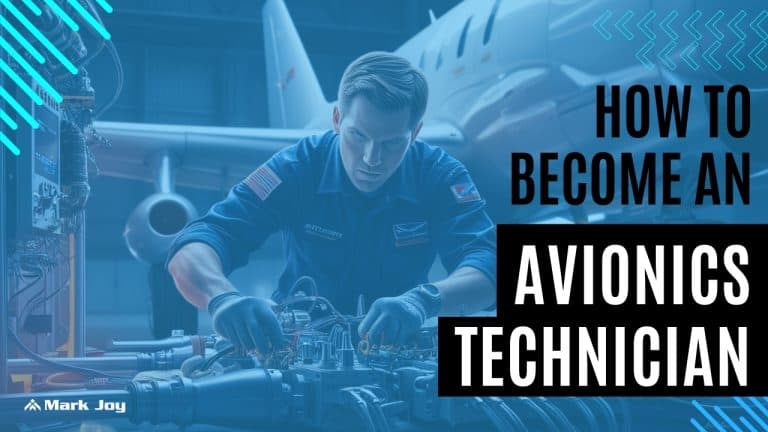The aviation industry thrives on precision, safety, and efficiency. It’s only natural that this industry is turning to augmented reality (AR) aircraft maintenance to meet those demands. Imagine technicians working on intricate aircraft components with interactive, real-time information guiding their every move, instead of bulky manuals.
With AR, technicians can see 3D models overlaid onto real aircraft parts, giving them “x-ray vision.” They can pull up repair manuals and work instructions right in their field of view without putting down their tools. This reality technology allows technicians to work on physical aircraft with AR overlays that enhance their understanding and efficiency.
Table of Contents:
Augmented Reality Aircraft Maintenance Benefits
AR in aviation maintenance goes beyond cool visuals. Let’s explore some tangible benefits:
1. Enhanced Efficiency and Accuracy
Traditional aircraft maintenance relies on extensive paper-based documentation and the knowledge of highly skilled technicians. AR can simplify this by providing technicians with real-time data and instructions right at their fingertips.
Think about a complex engine repair. Using AR, technicians can access digital models with engine schematics, step-by-step maintenance procedures, and even live sensor data, all while keeping their hands free. This access to information improves accuracy and efficiency.
This digital transformation also makes it easier to train new technicians. Virtual Reality training, which goes hand in hand with AR, has the potential to reduce maintenance time by up to 50%. Companies like Airbus have reported similar efficiency gains with AR-assisted maintenance.
2. Reduced Maintenance Time and Costs
In the fast-paced world of aviation, time is money. Airlines lose significant revenue each day a plane is grounded for maintenance. Augmented reality can expedite maintenance and inspection processes, getting planes back in the air quicker.
With real-time guidance through complex repairs and fewer errors, AR can help airlines minimize costly downtime. AR aircraft maintenance is not just about speed; it’s also about improving accuracy, which directly translates into reducing costly errors.
3. Improved Safety and Reduced Human Error
Even the most experienced aircraft technicians are susceptible to human error. AR acts like a vigilant co-pilot, providing step-by-step instructions and warnings that help technicians avoid costly and dangerous mistakes. By integrating data collected from sensors embedded within the aircraft and providing visual cues, AR systems can alert technicians of potential hazards in real time.
Imagine a technician working on an aircraft’s electrical system. AR can warn them if their hand gets too close to a live wire, potentially preventing a serious accident.
4. Remote Collaboration and Expert Support
Picture a technician at a remote airfield encountering a problem with an aircraft. Rather than flying in an expert, which takes time and costs money, they can use AR to connect with specialists thousands of miles away.
Remote technical support solutions and apps allow experts to see what the technician sees through their AR headset. They can then provide real-time guidance, annotations, and even virtual “hand-holding” through complex procedures. This ensures issues are resolved swiftly and correctly. AR technology is being used for remote expert assistance and is rapidly being adopted across different sectors.
5. A New Era of Training and Knowledge Transfer
As veteran technicians approach retirement, the industry grapples with passing their knowledge on to new generations. VR training immerses new technicians in realistic simulations where they can practice intricate tasks and troubleshooting procedures without any real-world risks. This hands-on experience allows for interactive learning experiences that greatly benefit knowledge retention. This is especially important for maintenance tasks on critical components of the aircraft.
AR tools like Manifest, available on devices like the Magic Leap and iPad, are being used by organizations such as the United States Air Force. These tools allow experienced technicians to create and share interactive, step-by-step guides for complex procedures. The integration of VR and AR aircraft maintenance doesn’t just improve efficiency today. This technology also ensures the continuity of expert knowledge in the industry, which helps address the industry’s skills gap, creating a new generation of technicians equipped with the knowledge and skills necessary to keep planes flying safely.
Conclusion
AR aircraft maintenance is not a futuristic fantasy. This technologically advanced solution is becoming a vital part of how the aviation industry is adapting to new challenges. AR/VR technology presents a tremendous opportunity for the aviation industry. AR is allowing technicians to perform tasks more efficiently, especially when they are able to overlay digital information onto physical assets. It promises safer skies, increased efficiency, and a future where maintenance and knowledge transfer reach new heights.

